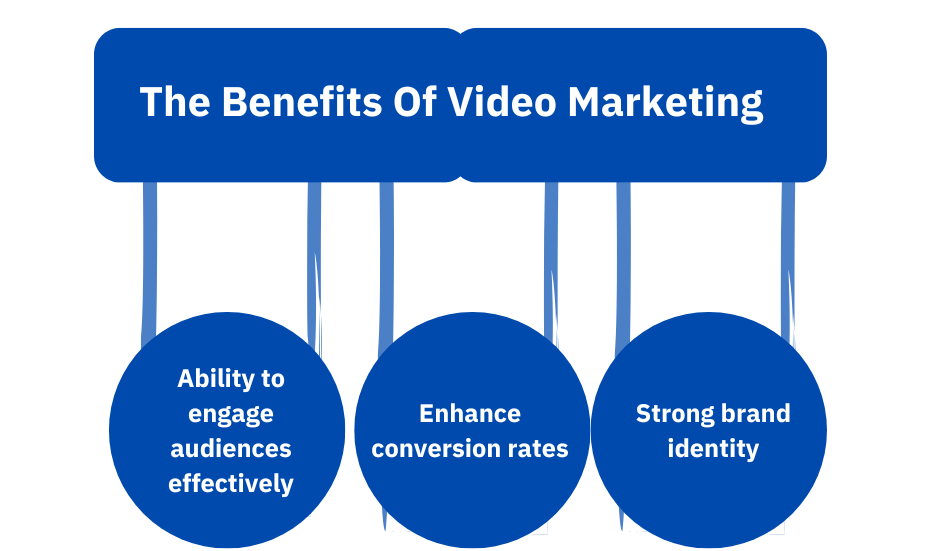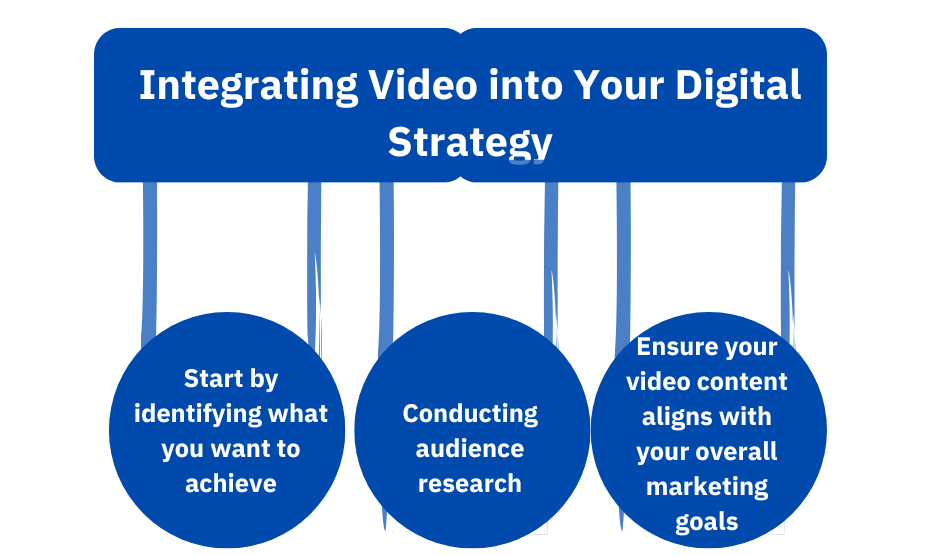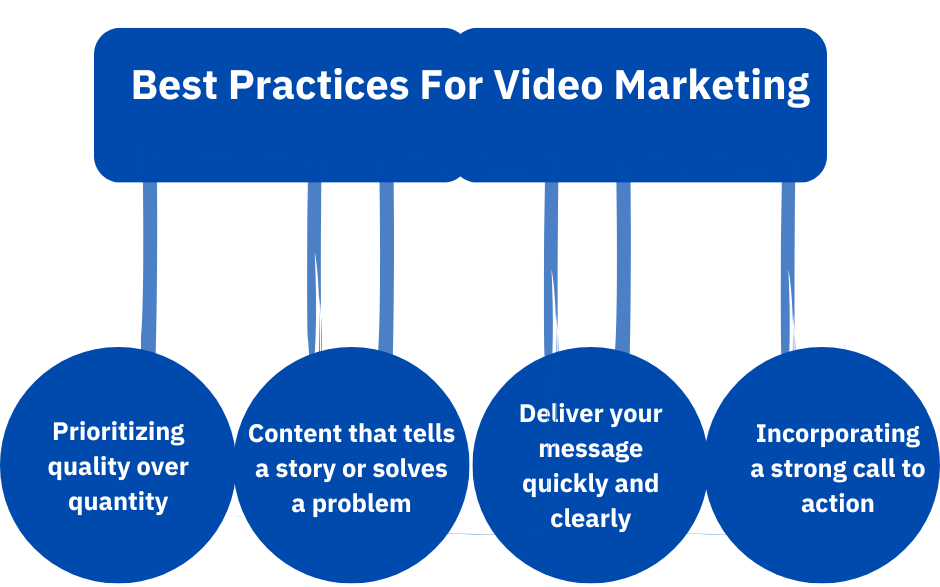The digital marketing landscape encompasses various components, including search engine optimization (SEO), social media marketing, email campaigns, content marketing, and more.
Each plays a vital role in reaching and engaging target audiences across different touchpoints. In this article, we will discuss the role of video marketing in Digital marketing strategy.
Page Contents:
Understanding Video Marketing
Video marketing is a strategic approach involving video content to promote products, services, or brands. This form of marketing leverages video’s unique ability to capture attention and compellingly convey messages.
It can enhance audience engagement and retention, making it an essential tool in the modern marketer’s toolkit.
There are various types of video content that companies can utilize to engage their audience. Explainer videos succinctly describe a product or service, breaking down complex ideas into easily digestible segments.
Testimonials feature satisfied customers sharing their positive experiences, building trust and credibility among potential buyers. Product demos showcase how a product works, highlighting its features and benefits in action.
Live streams offer real-time interaction with the audience, fostering a sense of community and engagement.
In the broader context of digital marketing, video serves as a powerful medium that complements other marketing efforts.
It can be integrated into social media campaigns, email marketing, and websites, enhancing organic reach and search engine optimization (SEO).
As consumers increasingly crave visual content, video marketing is essential for companies aiming to stand out in a crowded digital landscape.
The Benefits Of Video Marketing
Video marketing has become an essential component of modern advertising strategies, offering numerous advantages that significantly enhance a brand’s outreach and effectiveness.
One of the most compelling benefits of video marketing is its ability to engage audiences effectively. Studies show that videos hold viewer attention significantly longer than text or images—often retaining 70% of viewers until the end compared to only a fraction of visitors who read an article in its entirety.

Video content can dramatically enhance conversion rates. Data reveals that incorporating videos on landing pages can increase conversion rates by up to 80%.
Video plays a pivotal role in building a strong brand identity. Through storytelling and visual appeal, brands can convey their values and uniqueness, fostering deeper connections with their audience.
Moreover, videos are prioritized in search engine algorithms, which means that they can significantly improve a brand’s visibility online.
According to research websites with video content are 53 times more likely to rank on the first page of Google. This increased visibility extends to social media platforms, where video content is more likely to be shared, thereby amplifying a brand’s reach and awareness in the digital landscape.
Integrating Video into Your Digital Strategy
Establishing clear objectives is crucial for a successful video marketing campaign. Start by identifying what you want to achieve: are you aiming to enhance brand awareness, generate leads, or boost sales?
Each goal requires a different approach; for instance, brand awareness is often best served through engaging, shareable content that resonates with your audience, while lead generation might focus on videos that include calls-to-action or product demonstrations.
A well-defined content strategy is essential for maximizing the impact of your videos. Begin by creating a video content calendar that outlines what content you will produce and when it will be released.

This helps in maintaining a consistent posting schedule, which is critical for audience engagement. Additionally, ensure your video content aligns with your overall marketing goals and caters to your target audience’s interests and preferences.
Conducting audience research can provide valuable insights into what topics resonate most, enabling you to tailor your videos effectively.
Selecting the appropriate platforms for your video content is key to reaching your target audience effectively. Popular platforms such as YouTube, social media sites, and your website each have unique advantages.
When deciding where to publish your videos, consider your audience’s preferences, demographics, and online behavior. This strategic selection will enhance the visibility and performance of your video marketing efforts.
Best Practices For Video Marketing
When it comes to video marketing, prioritizing quality over quantity is essential. High-quality videos not only capture your audience’s attention but also reflect professionalism and brand values.
Engaging content that tells a story or solves a problem can create a lasting impact and encourage viewers to share your video, amplifying its reach.
In addition, keeping your videos short is crucial in today’s fast-paced digital environment. With attention spans dwindling, it’s vital to deliver your message quickly and clearly.

Aim for videos that are no longer than two minutes whenever possible; this helps to maintain viewer engagement and ensures that your key points are communicated effectively.
Incorporating a strong call to action is fundamental in guiding your audience towards the next steps. Whether it’s visiting your website, subscribing to your channel, or following on social media, an effective CTA can significantly drive user interaction.
Measuring Success In Video Marketing
Measuring success in video marketing involves tracking specific key performance indicators to assess the effectiveness of your campaigns.
Important KPIs to monitor include views, which indicate how many times your video has been watched, and engagement rate, which measures viewer interaction.
To accurately gauge video performance, various tools and analytics platforms, such as Google Analytics, YouTube Analytics, and social media insights, can provide valuable data.
Furthermore, the importance of adjusting strategies based on performance data cannot be overstated. By analyzing the insights gathered from KPIs, marketers can refine their content, optimize distribution channels, and enhance targeting strategies to improve future video marketing efforts and achieve better results overall.